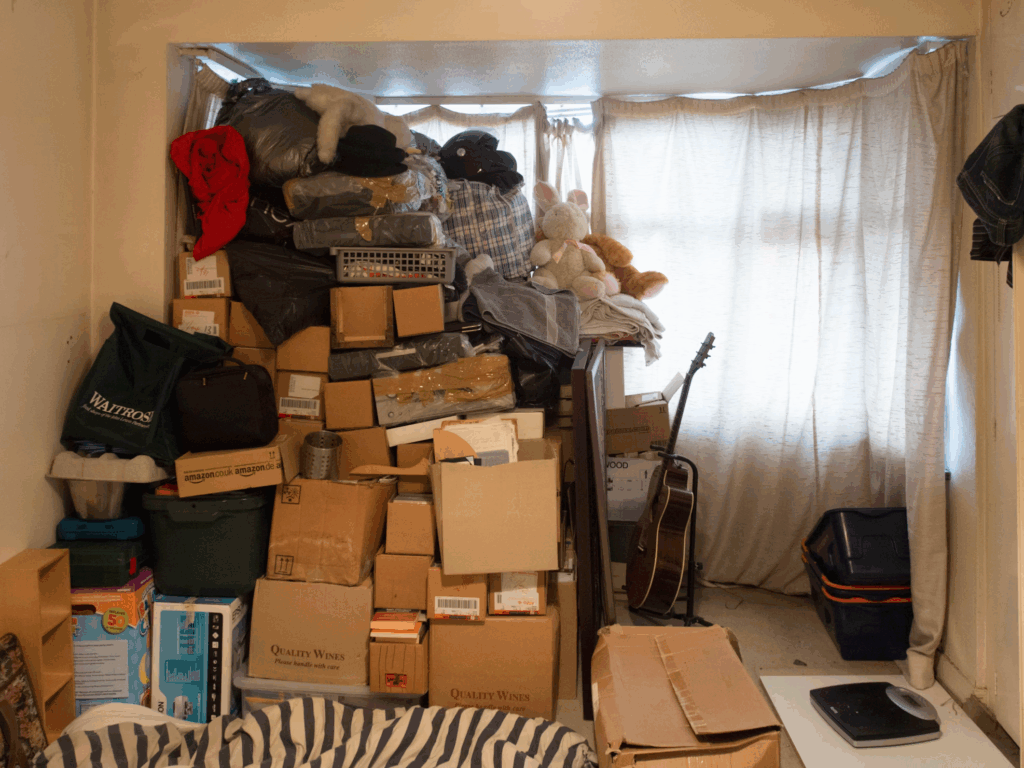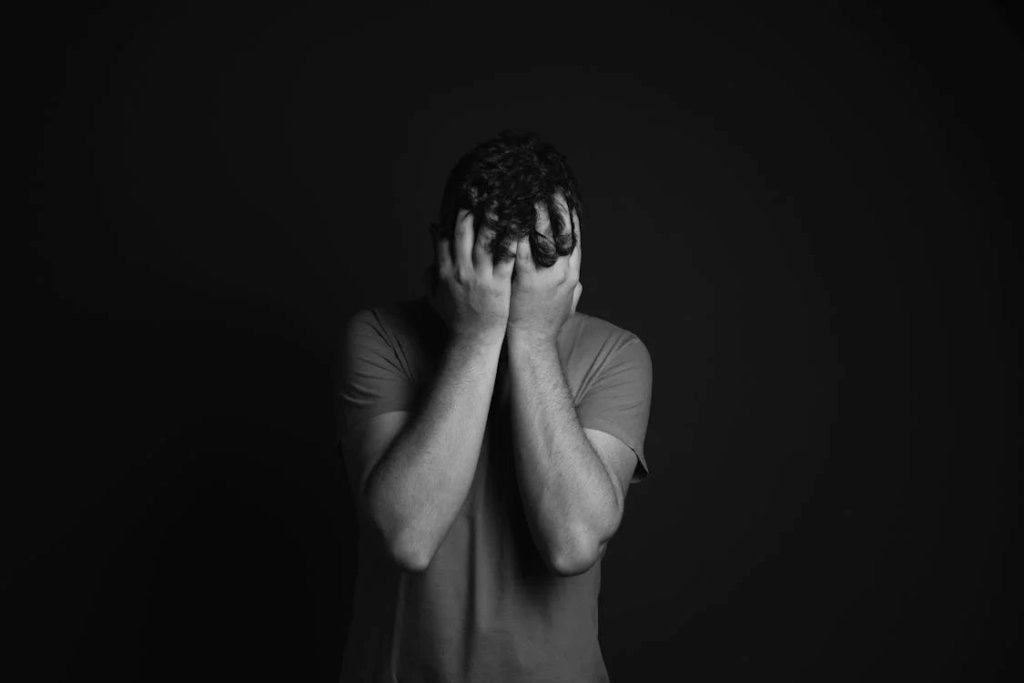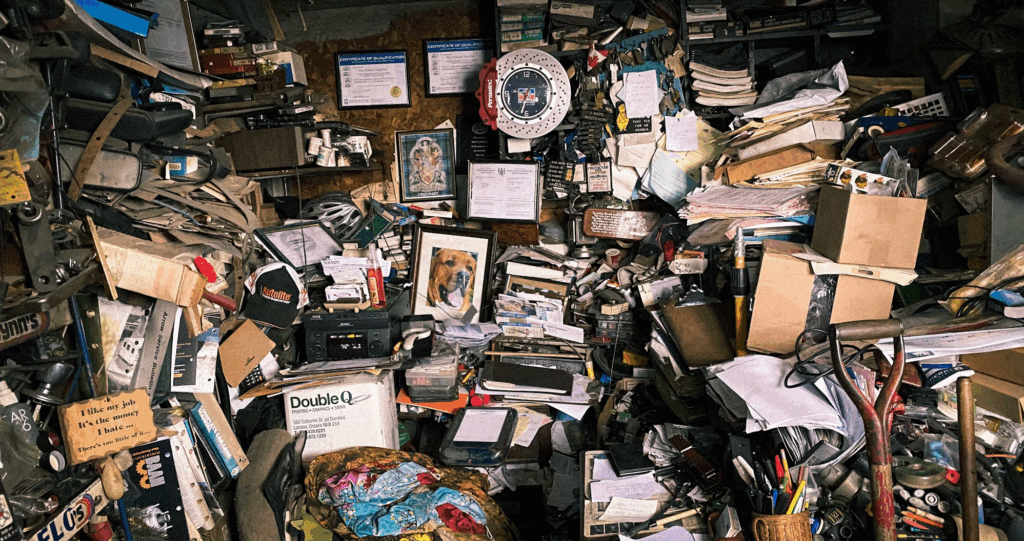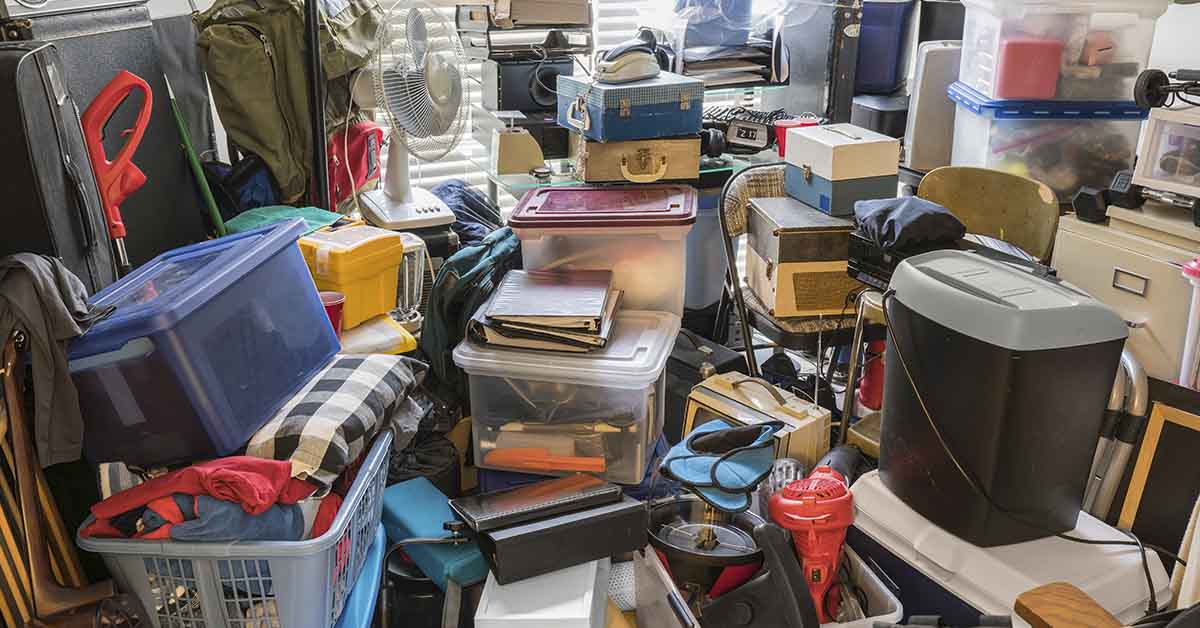You walk past that pile of doom every day without really noticing it. But when a friend visits, you instantly see your house through their eyes. When they point it out, you might feel embarrassed. This moment of recognition has a name, and you’re not alone. Experts call it ‘clutter blindness.’ It affects millions who don’t realize they have it, from those with diagnosed hoarding issues to people who simply let disorder creep into their daily lives. There are actual reasons behind this behavior.
When Clutter Becomes Dangerous

Psychologist Dr. Craig Sawchuk explains that when clutter makes it hard to use a room for its purpose, that’s when it becomes a real problem. If your bathroom becomes a storage closet or you can’t cook in your kitchen, you’ve crossed that line. The consequences can be serious. Blocked exits, overloaded electrical outlets, and piles near heat sources create serious dangers. Data shows that 25% of preventable house fires involve over-accumulation situations.
Why Your Brain Won’t Let Go

Have you ever been stuck choosing what to watch on Netflix? For people with this disorder, decision paralysis happens because their brain works differently. Research shows that they have trouble with executive functioning, which are the mental skills that help make decisions, organize thoughts, and control impulses. When people have to decide whether to keep or throw something away, their brains become overwhelmed trying to consider every possible outcome. This makes even basic decisions feel impossible because the brain struggles to process options and move beyond the fear of making the wrong choice.
Read More: People With Hidden Depression Can Display These 12 Symptoms
How Trauma Triggers Hoarding

More than half of the people who have a compulsive-keeping disorder have experienced trauma before their symptoms started. Studies report that 76% of people who stockpile ‘have a history of interpersonal violence,’ referring to traumatic experiences involving other people. For some, their possessions become a protective barrier. They surround themselves with towers of belongings. The clutter becomes their fortress where no one can hurt them. When trauma strikes matters. Childhood experiences like home robberies and physical abuse are strongly linked to this disorder.
The Mental Trap That Keeps You Stuck

Most people who over-accumulate can’t decide what to keep and what to throw away because they’re terrified of making mistakes. Every kept item becomes another brick in an invisible wall. They’re building protection, but they’re also building their prison. People develop strongly held beliefs like “I may need this someday” or “If I buy this, it will make me happy.” Perfectionism also feeds the problem. If you can’t organize everything perfectly, why start at all? When you’re scared of choosing wrong, making no choice feels safer.
It Does Run in Families

Twin studies suggest that genes may explain nearly half of why some people compulsively collect. Family patterns support this genetic connection. In one study, 84% of people with this disorder said a close family member also had similar behaviors, including parents, siblings, and even children. Scientists have also found a possible link between it and a section of DNA on chromosome 14. This chromosome helps control brain chemicals that manage impulse control and decision-making. While genetics may play a role, environment and life experiences still shape how these habits grow.
Read More: An Apple a Day? How About an Orange: Study Finds This Citrus Fruit Reduces Depression by 20%
What Sets Off A Hoarding Disorder

Dr. Sawchuk points out how culture plays a role. “We’re hunter-gatherers by nature, living in a consumer culture. It’s incredibly easy to acquire things.” This creates a perfect storm for these behaviors. Our brains evolved to gather resources for survival, but modern life makes accumulating things too convenient. Money troubles add another layer to this problem. Financial stress often triggers excessive stockpiling. People worry about future needs and keep items that might be valuable later.
Why It Feels Impossible to Stop

Those affected find it almost impossible to resist taking something home. But the real trap comes from avoiding decisions about what to discard. Putting off these choices brings temporary relief. This momentary comfort makes future decisions even harder. Each delay creates a deeper pattern of avoidance. Over time, the impulse to collect becomes overwhelming while the ability to let go completely disappears.
Read More: How a Lack of Alone Time Affects the Mental Health of Moms
It’s Usually Not What You Think

Sometimes collecting happens alongside other conditions like severe depression, brain injury, or dementia. For many people, it becomes a coping mechanism that helps them manage these struggles. They’re not being messy or lazy. The compulsive collecting helps them cope, even while creating more problems. Studies show this affects 2 to 6 percent of people worldwide. Many believe this disorder and obsessive-compulsive disorder (OCD) are connected, but this behavior occurs in less than 5% of OCD cases. Most people who over-accumulate don’t have OCD at all.
The Biggest Myths About Hoarding

The biggest myth is that compulsive collecting comes from laziness or lack of willpower. Scientists found that perfectionism, trouble making decisions, and putting things off all predict this disorder. These traits create layers of shame that make any confrontation stressful. Many people who struggle with it don’t even recognize it as a problem, which adds another barrier to getting help. The hidden nature means judgment from others cuts particularly deep. When someone reveals their living situation, dismissive responses about “just cleaning up” miss the point entirely and reinforce the very myth of laziness that makes the disorder so misunderstood.
There’s Real Help Available

The main treatment is cognitive behavioral therapy (CBT), which helps people understand what makes it difficult to throw things away, why clutter has built up, and how to see past their clutter blindness. During exposure sessions, patients practice letting go of items while learning that the anxiety they feel will pass, not harm them. Some people benefit from antidepressants like Prozac alongside therapy. Success means making steady improvements, not achieving a perfect home. When we recognize hoarding as a medical condition rather than a character flaw, real solutions become possible. With proper treatment, people can reclaim their homes and their lives.
Read More: Mental Health Experts Reveal Why Anxiety May Be Worse Just Before You Sleep

